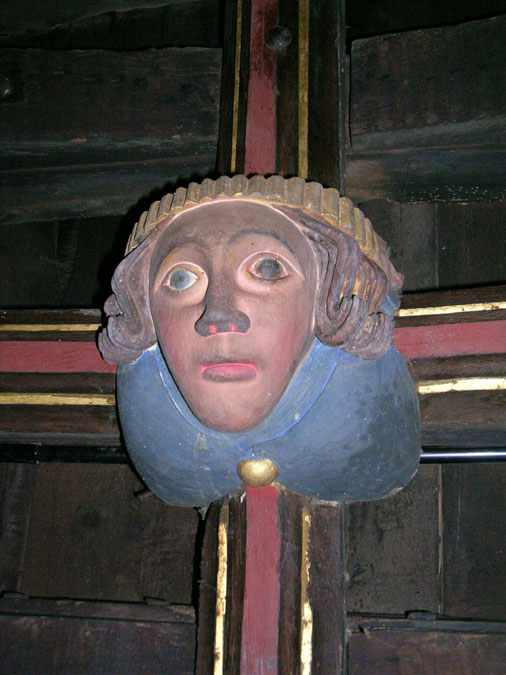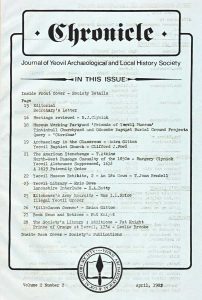This article came from the Chronicle
Volume 2(2) published April 1982. Page 25
WELLS CATHEDRAL’S “KILL-CANON CORNER”
Author: Brian Gittos
The conservation of the West Front of Wells Cathedral is being carried out as one of the most advanced projects of its kind. We are thus fortunate in having such an interesting enterprise so close at hand and on two occasions Moira and I have been able to visit the Cathedral and ascend the scaffolding to observe this work in detail.
On the first visit, in May 1979, our guide was the Very Rev.Patrick Mitchell, Dean of Wells. After the formalities of signing indemnity forms, we donned out protective headgear and began the climb. The scaffolding was then erected on the North Tower and the work was at an early stage. Although the ladders are steep, the staging platforms are broad and firm under foot with successive storeys acting as roofs for the stage below, giving a feeling of added security. It was soon apparent why the painstaking work of repair and conservation is so time-consuming and costly. Each individual stone of the fabric has to be assessed and replacements made where necessary. Great care is being taken to use the most appropriate materials and the ancient quarries near the village of Doulting, some six miles to the east, have been reopened to provide matching colitic limestone.
I have been careful to avoid the tern restoration in the context of the work at Wells, because when dealing with the sculptured figures and scenes, every attempt is being made to conserve what remains, rather than make replacements. Architectural details, however, are being replaced where this is essential, and the skills exercised in the Masons’ yard at Wells are of an appropriately high standard.
The West Front was built towards the end of the first half of the 13c. and the detailed figure carving which has survived the passing of seven centuries is remarkable. We were particularly impressed by the thoroughness with which the biblical scenes had been carved, Close inspection revealed that the carving was as carefully executed on those surfaces facing the niches as it was on the exposed surfaces. To the unaided eye at ground level this fine detail is impossible to distinguish, even on the exposed surfaces. Clearly, the conscientious medieval craftsman was adorning his church for the glory of God who alone could judge the results.
The military figures are perhaps the most impressive, and one in particular has a sinister, menacing appearance. He wears a long gown and a great pot helm, and his large staring eyes challenge you through the eye slits. A massive seated king is similarly awe-inspiring, despite having a badly-weathered arm supported by a wire cage.
We observed figures in different stages of conservation, which is a lengthy process. After initial clearing and removal of damaging Victorian fixing clamps, the figure is coated in a lime poultice and swathed in bandages and sack cloth, looking something akin to an Egyptian mummy. It remains stewing in this manner for some five to six weeks whilst salts lost from the surface of the figure are gradually replaced and consolidation of the surface takes place. After the lime poultice has been removed, a thin shelter coat is applied which, it is hoped, will give additional protection against weathering for about 70 to 100 years. Our children’s children’s children will then be faced with further conservation work, but they shall at least have the benefit of a long-term plan and very careful recording of what has been done.
The weather played its part in both our visits to the West Front. On the first occasion a dull morning was succeeded by a brighter breezier afternoon and the exposed north-west corner of the north tower felt the full effect of the wind. It seems that even when the air is still in the town, the wind still whistles round ‘kill-canon corner’. The origins of this colourful, if bloodthirsty term, are obscure, but it did seem uncomfortably appropriate when standing on the lofty windswept scaffolding.
On our second visit in September of last year, Jerry Sampson, the West Front Archivist, was our guide. His task is to record the work as it happens by camera, written notes, and sketch pad. He is working with the distinguished archaeologist, Warwick Rodwell, who has revolutionized church archaeology over the past decade. Consequently, more positive conclusions are being reached as to the dating of the fabric in terms of what appears to be original and what has been replaced during several previous restorations. He showed us examples of his work including a coloured drawing of one of the ladies based on the traces of original paint which had been identified on the figure. This fragmentary glimpse is only a hint of how the fully polychrome facade must have appeared in the 13c. This time we scaled the scaffolding on the south tower, and whilst it is true that its figure-sculpture lacks some of the drama, of those on the north tower, there is much subtle detail to be appreciated. There are imposing bishops and sage-like prophets with elaborate curling beards. Amongst the biblical scenes there is Noah building his Ark, and the Ark itself sailing on a stormy sea with a great many animals in evidence. The weather deteriorated during our second visit and we were glad of the protection from the rain afforded by the staging above our heads.
This account is only a short summary of what were two thoroughly absorbing days at Wells. We are extremely grateful to both our hosts for giving us so much of their time and enabling us to witness, albeit briefly, a unique event in the conservation of our heritage.

